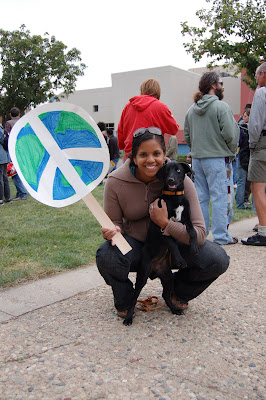 I'm heading to Milwaukee tomorrow for the 40th anniversary celebration/commemoration of that city's landmark open housing demonstrations. From 1966-1968, housing, along with police brutality, was one of the most important, but contentious, issue in the northern struggle for racial justice. In 1966, thousands of white erupted in violence outside of Chicago when Martin Luther King led a march for fair housing. In Milwaukee, from August 1967 through April 1968, Vel Phillips, Fr. James Groppi, the NAACP Youth Council and Commandos led 200 consecutive nights of marching in order to force passage of a city-wide fair housing ordinance. In response, thousands of hostile local whites attacked peaceful marchers on the white ethnic south side of the 16th street viaduct in scenes eerily similar to the violence at the foot of the Edmund Pettus Bridge in Selma, Alabama, in 1965. Yet, local activists and their supporters were not deterred. When Fr. Groppi made an ecumenical call for support, hundreds of people from across the country poured into the city to bear witness and march. With Black Power sweeping the Movement, the Milwaukee open housing campaign was seen by many as a "last stand for an integrated, non-violent, church-based movement." In the wake of King's assassination in early April, 1964, the Milwaukee Common Council finally passed a tough local ordinance barring racial discrimination in the sale or rental of local property. The Milwaukee campaign also contributed to passage of the historic 1968 Fair Housing Act.
I'm heading to Milwaukee tomorrow for the 40th anniversary celebration/commemoration of that city's landmark open housing demonstrations. From 1966-1968, housing, along with police brutality, was one of the most important, but contentious, issue in the northern struggle for racial justice. In 1966, thousands of white erupted in violence outside of Chicago when Martin Luther King led a march for fair housing. In Milwaukee, from August 1967 through April 1968, Vel Phillips, Fr. James Groppi, the NAACP Youth Council and Commandos led 200 consecutive nights of marching in order to force passage of a city-wide fair housing ordinance. In response, thousands of hostile local whites attacked peaceful marchers on the white ethnic south side of the 16th street viaduct in scenes eerily similar to the violence at the foot of the Edmund Pettus Bridge in Selma, Alabama, in 1965. Yet, local activists and their supporters were not deterred. When Fr. Groppi made an ecumenical call for support, hundreds of people from across the country poured into the city to bear witness and march. With Black Power sweeping the Movement, the Milwaukee open housing campaign was seen by many as a "last stand for an integrated, non-violent, church-based movement." In the wake of King's assassination in early April, 1964, the Milwaukee Common Council finally passed a tough local ordinance barring racial discrimination in the sale or rental of local property. The Milwaukee campaign also contributed to passage of the historic 1968 Fair Housing Act. 
One of the interesting dynamics of the Milwaukee civil rights era is the unique leadership of Fr. James Groppi, a white Catholic priest who served as the advisor to the local NAACP Youth Council and Commandos. Groppi grew up on the city's heavily Catholic white ethnic South Side, so was seen as a religious and race traitor by many. The Youth Council constituted the shock troops of the local Movement. The Commandos were a self-defense group formed in 1966 after a Klan bomb blast destroyed the Milwaukee NAACP office and thousands of angry whites threatened violence in suburban Wauwatosa during a peaceful protest outside the home of Judge Robert Cannon. The Commandos practiced what they called "not violence." They walked along the outside of march lines, didn't carry weapons or start any violence, but fought back if provoked or attacked by white onlookers or racist police. In this way, they offered a compelling tactical alternative to pure Kingian non-violence as well as other Black Power groups, like the Black Panthers, who carried weapons, or advocated revolutionary violence as a tool for liberation. Together, Groppi, the Youth Council and Commandos stood at the vanguard of Milwaukee struggle for racial justice from 1965 through 1969.
Oh, there are lots of fascinating dynamics to the Milwaukee Movement story, but you'll have to wait until my book comes out to read all about 'em... (smile)

















































